Comprehensive Guide to Garden Maintenance in Greenslopes
Introduction to Garden Maintenance
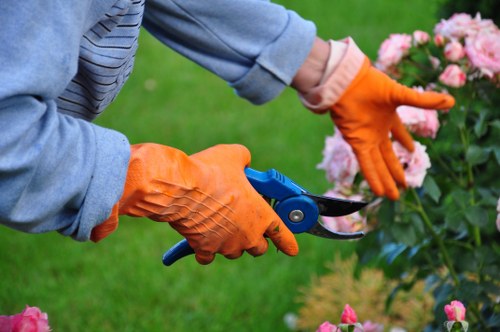
Maintaining a beautiful garden in Greenslopes requires dedication, knowledge, and the right techniques. Whether you are a seasoned gardener or a beginner, understanding the unique climate and soil conditions of Greenslopes is essential for thriving plants.
In this guide, we will explore various aspects of garden maintenance that are tailored specifically for the Greenslopes area. From soil preparation to pest control, we aim to provide you with all the information you need to keep your garden lush and vibrant throughout the year.
Proper garden maintenance not only enhances the aesthetic appeal of your property but also contributes to a healthier environment. By adopting sustainable gardening practices, you can ensure that your garden remains a sanctuary for both you and the local wildlife.
Soil Preparation and Improvement
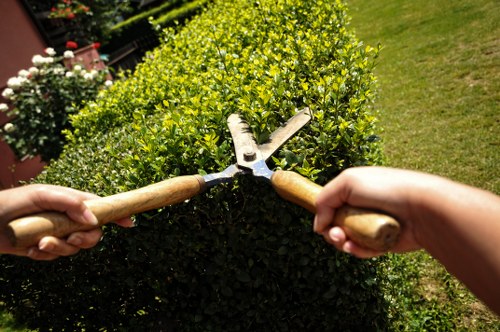
One of the foundational steps in garden maintenance is ensuring that your soil is fertile and well-draining. Greenslopes soil can vary, so conducting a soil test is recommended to determine its pH levels and nutrient content.
Based on the soil test results, you may need to amend the soil with organic compost, manure, or other natural fertilizers. Improving soil structure not only promotes healthy plant growth but also enhances water retention and drainage.
Additionally, incorporating mulch into your garden beds can help regulate soil temperature, retain moisture, and suppress weeds. Mulching is a simple yet effective way to maintain the health of your garden with minimal effort.
Plant Selection and Care
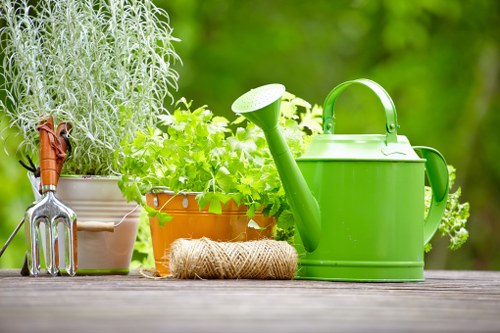
Choosing the right plants is crucial for a successful garden in Greenslopes. Consider plants that are native or well-adapted to the local climate, as they tend to be more resilient and require less maintenance.
Some popular choices for Greenslopes gardens include:
- Eucalyptus trees
- Grevillea shrubs
- Lavender
- Hostas
- Succulents
Each plant species has specific care requirements, so it's important to research and understand the needs of your chosen plants. Regular pruning, watering, and feeding are essential practices to keep your garden healthy and blooming.
Watering Techniques
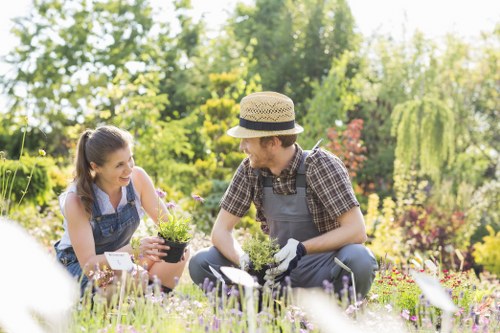
Efficient watering is a key component of garden maintenance. Overwatering or underwatering can lead to plant stress and poor growth. In Greenslopes, where the climate can be quite variable, it's important to adopt watering practices that conserve water while ensuring your plants receive adequate moisture.
Consider installing a drip irrigation system, which delivers water directly to the plant roots and minimizes wastage. Additionally, watering early in the morning or late in the evening can reduce evaporation and maximize water absorption.
Implementing rainwater harvesting systems is another sustainable approach. By collecting and storing rainwater, you can reduce your reliance on mains water and provide your garden with natural, chemical-free hydration.
Pest and Disease Management
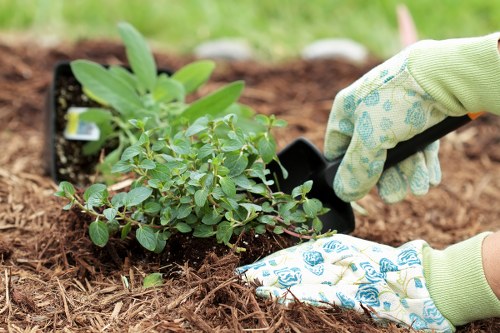
Protecting your garden from pests and diseases is essential for maintaining plant health. Regular monitoring and early detection can prevent minor issues from escalating into major problems.
Employ integrated pest management (IPM) strategies, which combine biological, cultural, and mechanical control methods. Encourage beneficial insects, such as ladybugs and bees, which can naturally combat harmful pests.
When necessary, use organic or environmentally friendly pesticides to minimize the impact on the ecosystem. Avoiding chemical treatments whenever possible helps maintain a balanced and sustainable garden environment.
Pruning and Trimming
Regular pruning and trimming are vital for the structural integrity and appearance of your plants. Proper pruning techniques promote healthy growth, enhance flowering, and prevent overcrowding.
Focus on removing dead or diseased branches, as well as any that cross or rub against each other. This not only improves air circulation but also reduces the risk of pest infestations and disease spread.
Use sharp, clean tools to make precise cuts, which minimizes damage to the plants. Pruning should be done during the appropriate seasons to ensure optimal growth and recovery.
Weed Control
Weeds compete with your garden plants for nutrients, water, and sunlight, making weed control an essential aspect of garden maintenance. Implementing a proactive approach to weed management can save you time and effort in the long run.
Mulching is an effective way to suppress weed growth by blocking sunlight and creating a barrier. Additionally, regularly hand-pulling weeds before they set seeds can prevent future infestations.
Consider using landscape fabric or other barrier materials in garden beds to further reduce weed proliferation. Maintaining a clean and organized garden environment discourages weed establishment.
Fertilization Practices
Fertilizing your garden provides essential nutrients that support plant growth and development. Understanding the specific nutrient requirements of your plants is crucial for effective fertilization.
Organic fertilizers, such as compost, bone meal, and fish emulsion, release nutrients slowly and improve soil health over time. Inorganic fertilizers can provide a quick nutrient boost but should be used sparingly to avoid soil degradation.
Apply fertilizers according to the recommended guidelines for each plant species, and avoid over-fertilizing, which can lead to nutrient runoff and environmental harm.
Irrigation Systems
Investing in a reliable irrigation system can streamline your garden maintenance routine. Automated systems, such as timers and smart controllers, ensure that your plants receive consistent and adequate watering without manual intervention.
Drip irrigation systems are particularly effective in Greenslopes, as they deliver water directly to the roots, reducing evaporation and water wastage. Additionally, rain sensors can adjust watering schedules based on real-time weather conditions, enhancing water efficiency.
Regularly inspect and maintain your irrigation system to prevent leaks, clogs, and other issues that can disrupt water delivery and impact plant health.
Seasonal Maintenance Tasks
Each season brings unique challenges and opportunities for garden maintenance. Adapting your maintenance practices to the changing weather can ensure year-round garden health.
In spring, focus on preparing beds, planting new growth, and pruning dormant plants. Summer maintenance involves regular watering, pest control, and managing heat stress. Fall tasks include clearing dead foliage, planting perennials, and preparing for winter. Winter maintenance may involve protecting plants from frost and planning for the upcoming growing season.
Keeping a garden maintenance calendar can help you stay organized and ensure that all necessary tasks are completed in a timely manner.
Composting and Waste Management
Composting is a sustainable practice that recycles organic waste into valuable fertilizer for your garden. By composting kitchen scraps, garden trimmings, and other biodegradable materials, you can reduce landfill waste and improve your soil quality.
Set up a compost bin in your garden and maintain a proper balance of green (nitrogen-rich) and brown (carbon-rich) materials. Regularly turning the compost ensures adequate aeration and accelerates the decomposition process.
Use the finished compost to enrich your garden beds, enhance soil structure, and provide a natural source of nutrients for your plants.
Mulching Techniques
Mulching serves multiple purposes, including moisture retention, temperature regulation, and weed suppression. Selecting the right type of mulch is important for achieving the desired effects in your garden.
Organic mulches, such as bark, straw, and wood chips, decompose over time, adding organic matter to the soil. Inorganic mulches, like gravel and rubber, provide longer-lasting coverage but do not contribute to soil fertility.
Apply mulch evenly around plants, maintaining a layer of 2-3 inches. Avoid piling mulch against plant stems or tree trunks to prevent rot and pest infestations.
Lawn Care and Maintenance
A well-maintained lawn is a central feature of any garden. Proper lawn care involves regular mowing, watering, aeration, and fertilization to keep the grass healthy and vibrant.
Mow your lawn to the appropriate height for your grass type, which promotes deeper root growth and resilience against drought and pests. Aerating the soil helps alleviate compaction, allowing air, water, and nutrients to penetrate the grassroots.
Address issues such as bare patches or weed infestations promptly to maintain a uniform and lush lawn. Seasonal overseeding can also help rejuvenate your lawn and enhance its appearance.
Garden Tools and Equipment
Having the right tools and equipment is essential for efficient garden maintenance. Invest in high-quality tools that are ergonomically designed and suited to the specific tasks you perform.
Basic gardening tools include:
- Pruners and shears
- Spades and shovels
- Rakes and hoes
- Watering cans and hoses
- Loppers and saws
Regularly clean and maintain your tools to extend their lifespan and ensure optimal performance. Sharpen blades, lubricate moving parts, and store tools in a dry, organized manner.
Creating a Sustainable Garden
Sustainability in gardening involves practices that are environmentally friendly and resource-efficient. By adopting sustainable techniques, you can create a garden that thrives with minimal impact on the ecosystem.
Implementing water-saving strategies, using native plants, and reducing chemical inputs are key aspects of sustainable garden maintenance. Additionally, encouraging biodiversity by providing habitats for beneficial insects and wildlife enhances the resilience of your garden.
Consider incorporating renewable energy sources, such as solar-powered lighting, to further reduce your garden's carbon footprint. Sustainable gardening not only benefits the environment but also creates a healthier and more vibrant space for you to enjoy.
Local Climate Considerations
Greenslopes experiences a subtropical climate, characterized by warm summers and mild winters. Understanding the local climate is crucial for selecting appropriate plants and scheduling maintenance tasks.
The region receives ample rainfall, but it's important to manage water effectively to prevent issues like root rot and fungal diseases. Additionally, microclimates within your garden, such as shaded areas or sheltered spots, can influence plant growth and care requirements.
Monitoring weather patterns and adjusting your maintenance practices accordingly ensures that your garden adapts well to the changing seasons and remains vibrant throughout the year.
10-15 Nearby Areas to Greenslopes
- Westgate: Just 2 kilometers from Greenslopes, Westgate offers lush parks and is ideal for gardeners who enjoy open spaces.
- Carina: Located 3 kilometers away, Carina has a thriving community garden scene with various local clubs.
- Rocklea: At a distance of 4 kilometers, Rocklea is known for its diverse plant species and gardening events.
- Coogee: 5 kilometers from Greenslopes, Coogee boasts beautiful waterfront gardens and community green initiatives.
- Sunnybank: Situated 6 kilometers away, Sunnybank has a rich variety of ornamental plants and expert gardening services.
- Eight Mile Plains: 7 kilometers distant, this area is renowned for its extensive public gardens and botanical gardens.
- Bardon: Located 8 kilometers from Greenslopes, Bardon offers rocky gardens and specialized plant nurseries.
- Mulgrave: At 9 kilometers distance, Mulgrave is famous for its tropical gardens and exotic plant collections.
- Wishart: 10 kilometers away, Wishart features well-maintained residential gardens and landscaping professionals.
- Eight Mile Plains: Another area at 11 kilometers, it's appreciated for its seasonal garden displays and workshops.
- Upper Mount Gravatt: 12 kilometers from Greenslopes, this area has sophisticated garden designs and eco-friendly practices.
- Woodridge: Located 13 kilometers away, Woodridge offers gardens suitable for both small and large-scale maintenance projects.
- MacGregor: At 14 kilometers distance, MacGregor is home to community-supported agriculture and sustainable gardening projects.
- Slacks Creek: Situated 15 kilometers from Greenslopes, Slacks Creek features riverside gardens and easy access to gardening resources.
Conclusion
Maintaining a garden in Greenslopes is a rewarding endeavor that combines creativity, diligence, and a deep understanding of the local environment. By implementing the strategies outlined in this guide, you can cultivate a thriving garden that enhances the beauty of your property and contributes positively to the surrounding ecosystem.
Remember that garden maintenance is an ongoing process that requires consistent effort and adaptation to changing conditions. Stay informed about the latest gardening practices, engage with the local gardening community, and continuously refine your techniques to achieve the best results.
**Contact us today** to get professional garden maintenance services tailored to your needs in Greenslopes and its nearby areas. **Book your service now** and transform your garden into a stunning oasis.
